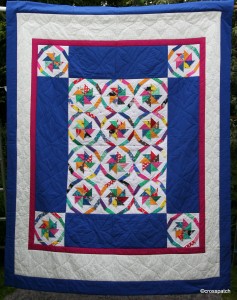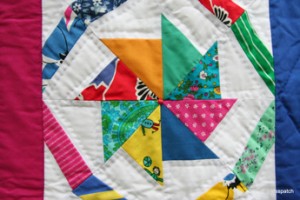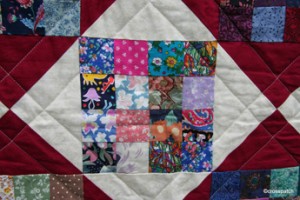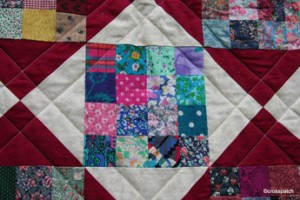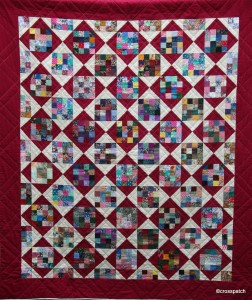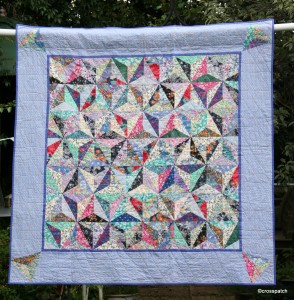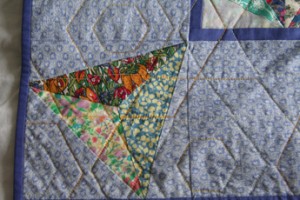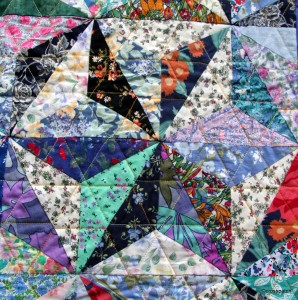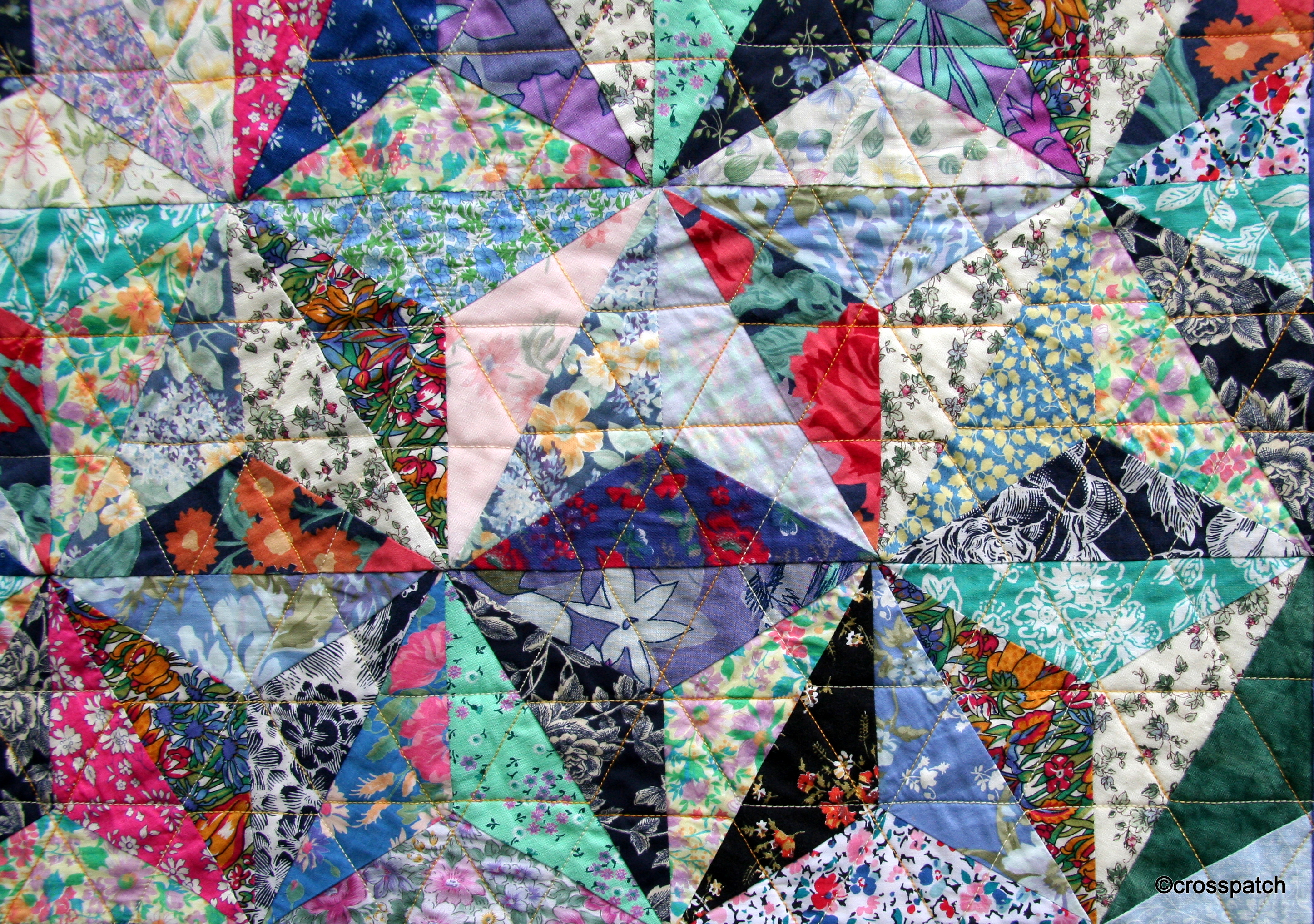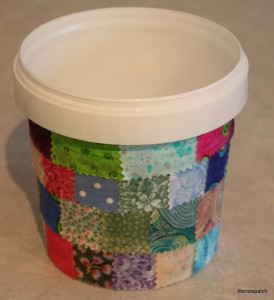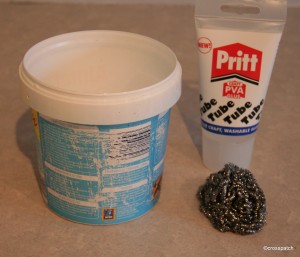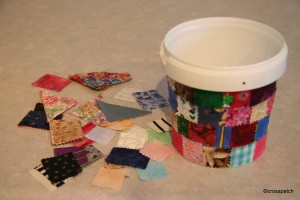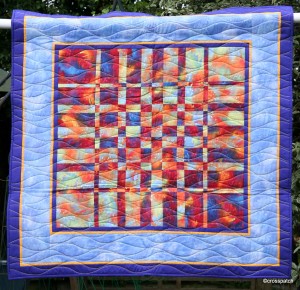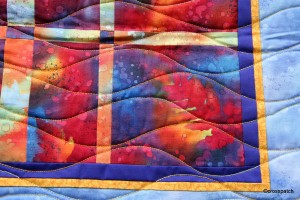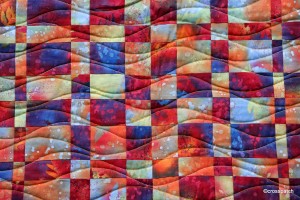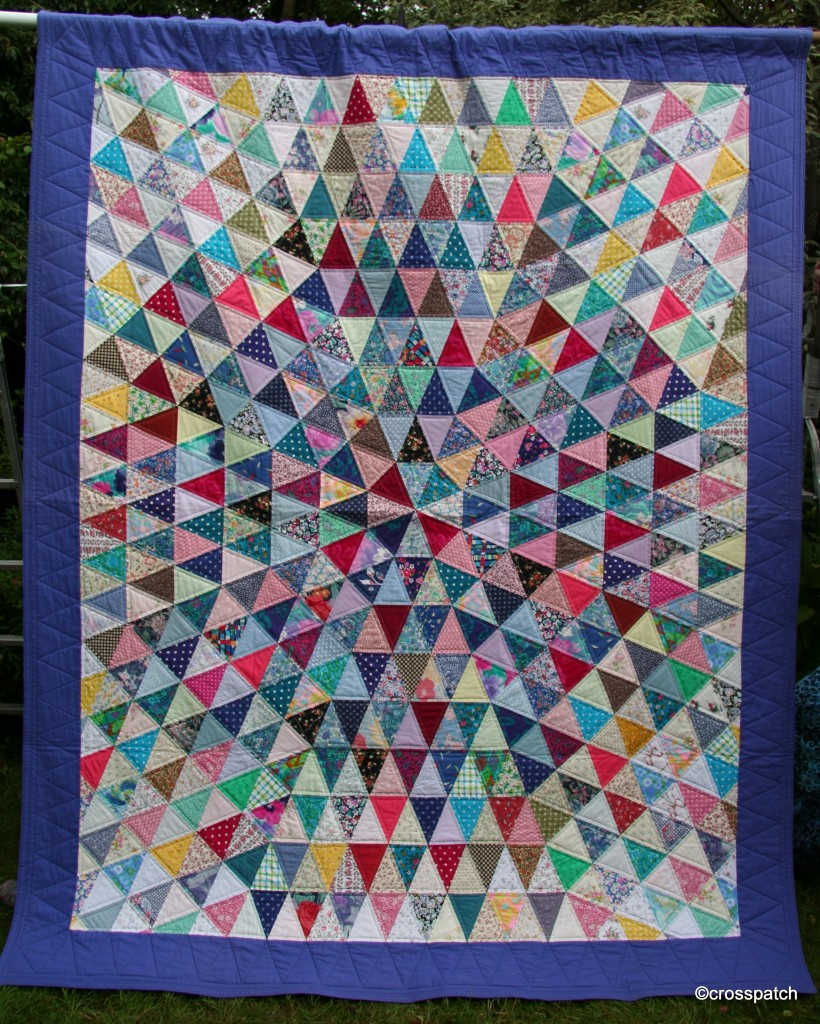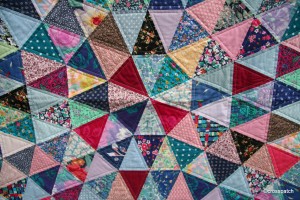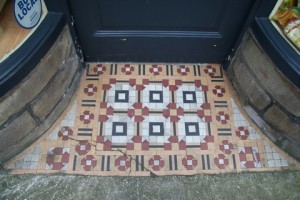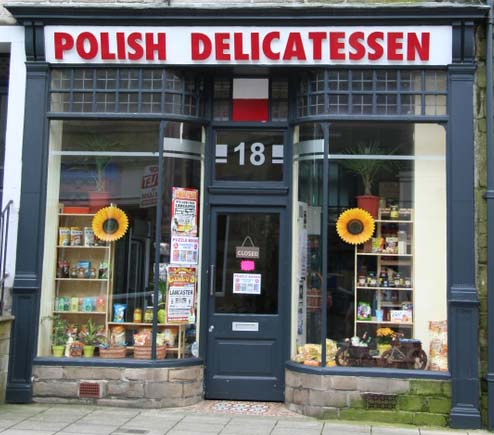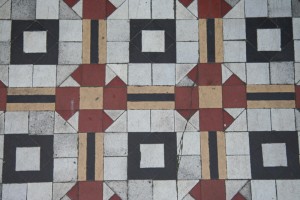This is one of the first quilts I made circa 1985, and the first I think which expressed my love of bright colours. It was intended as my own bed quilt. Not sure why, but I don’t think it ever sat on my bed, or was ever slept under. I suspect that by the time it was finished I already despised it, made as it was with (shock, horror) polyester cotton sheeting! I didn’t really know any better back then, I think I was a student at the time so money was in short supply. Finding fabrics in saturated colour was difficult, and 100% cottons almost unheard of, quilt supplies hard to find. It was made with really thick polyester wadding so it is not heavily quilted, but it is quite puffy and pillowy. I think it would benefit from more quilting, but I’m not planning to do any more, I’d have to re tack it, and as it’s hand quilted, the additions would have to be hand quilted too, it’s a long time since I hand quilted anything, I’m terrible at it, as you can see if you look closely.
To see how the block is made you need to see it as a four patch, divide the block into 4 quarters diagonally and vertically; each of these squares is made up of two triangles, each of which is made of 4 pieces, which when put together make the pinwheel in the centre and the frame surrounding it.
It began well but I suspect I lost interest after making twelve blocks, another row would have required an additional 18 blocks, instead of which I made 4, one for each corner and finished it off with very wide borders. It did mean that there was plenty of colour in the quilt, perhaps if I’d had more pinwheel blocks it would not have given as much impression of colour, the balance of colour and white in the finished quilt would have been more even, and perhaps more anaemic.
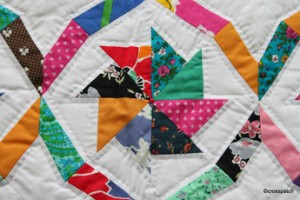
Looking at it now I think it reminds me of the sugar bag quilts of the 1930’s, it’s a happy quilt, and deserves to be seen. I might put it on the bed in my studio, rather than allow it to languish unseen in a packing box in the corner of that room. Then at least it will be slept under occasionally. I sometimes retire to that bed in the middle of the night if I cannot sleep; too hot (me), or too much snoring (not me).

